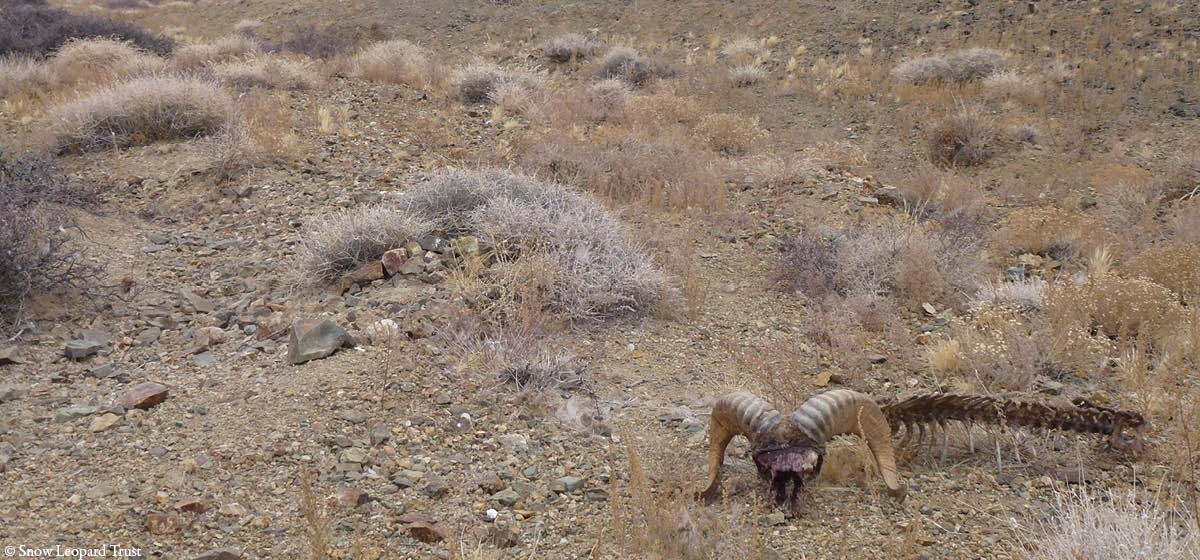Snow leopard study in Mongolia
The snow leopard lives in the mountain ranges of Central Asia at an altitude of between 2,000 and 5,500 metres. With its thick, camouflaged coat, large paws and long tail, the species is perfectly adapted to a life in this steep and rugged environment. Research into snow leopards began in the early 1980s, but it quickly became clear to the researchers that man is not so well adapted to this mountain environment, and that it’s extremely difficult to collect data on the snow leopard.
There are few if any roads in the snow leopard’s kingdom. In certain places you can bring in equipment with an all-terrain vehicle, in others you need pack animals or must carry the equipment yourself. The research itself is hindered by the fact that snow leopards are so well camouflaged that they are pretty much impossible to spot, so you cannot observe them to gather information.
Tracking
Tracking a cat in the snow through the steep mountains means taking your life in your hands, and even then you can’t follow it for very long. You can’t even collect droppings to look for residue of prey, or log where the snow leopards have been. It has proved impossible to distinguish for sure between snow leopards and other species such as wolves and foxes, other than with DNA analysis.
The solution was to try to capture snow leopards and fit them with radio collars. In the 1980s and 1990s, researchers managed to fit 13 leopards with collars. It soon became evident that it was to all intents and purposes not possible to pinpoint the animals’ locations in the mountains as one had to trek enormous distances to pick up the signals from the collars.
GPS tracking
It was only when new technology was developed in the early 2000s that the research could start in earnest. The collars in use now have a GPS receiver that activates every five hours and records the animal’s position. When this location is received, a satellite telephone sends the position to the internet.
The battery dies after one-and-a-half or two years, and then the collar falls off. Just before that happens, the researchers try to recapture the leopard to fit a new collar so it can continue to be tracked.
Thus the scientists don’t have to locate the animals – once the collar is in place, that takes care of itself. The collar gives information about the size of individuals’ ranges, whether they defend their territories or accept each other, what the leopards eat, how many cubs they have, how long they live, what they die of, and so on.
Camera assistance
New cameras are also used that activate when there is movement in front of them. Each snow leopard has a unique spot pattern, and with the help of the cameras it’s possible to identify individuals and so estimate how many there are in a particular area. We can also collect droppings from an area and, using DNA techniques, see how many different snow leopards the droppings are from, as well as finding out what the snow leopards have been eating by examining DNA from their prey animals.
Data from the collar makes it possible to check how well the camera-inventory methods are working. Then we can check how well the collection of droppings has worked. This way, you get a good measure of how many snow leopards there are in an area and can try out and evaluate new, cheaper inventory methods.
Long-term study
In 2008 the first long-term snow leopard study was launched by two US-based organisations, the Snow Leopard Trust and Panthera. The study will continue for at least 15 years and is based at Tost Uul, a mountain range in Mongolia’s Gobi Desert.
The study is multi-faceted and aims to gather as much knowledge as possible about the snow leopard. The first few years have concentrated on building up the operation and developing suitable ways of studying the snow leopard, such as how to capture them, how to study food preferences and inventory methods.
New research centre
A snow leopard research and training facility called J. Tserendevleg Research and Conservation Center was built in the summer of 2010. Here, researchers, students and visitors will be able to stay while working on the study project. As well as the research into the snow leopard, it will be possible to try new conservation programmes to evaluate their effectiveness. The study region is perfectly suited for this, since there is already good contact with the local inhabitants and the snow leopard population here is the best studied in the World. So even though there is much still to learn, this is a major step towards a better understanding of the snow leopard and its mysterious life in the mountains.




